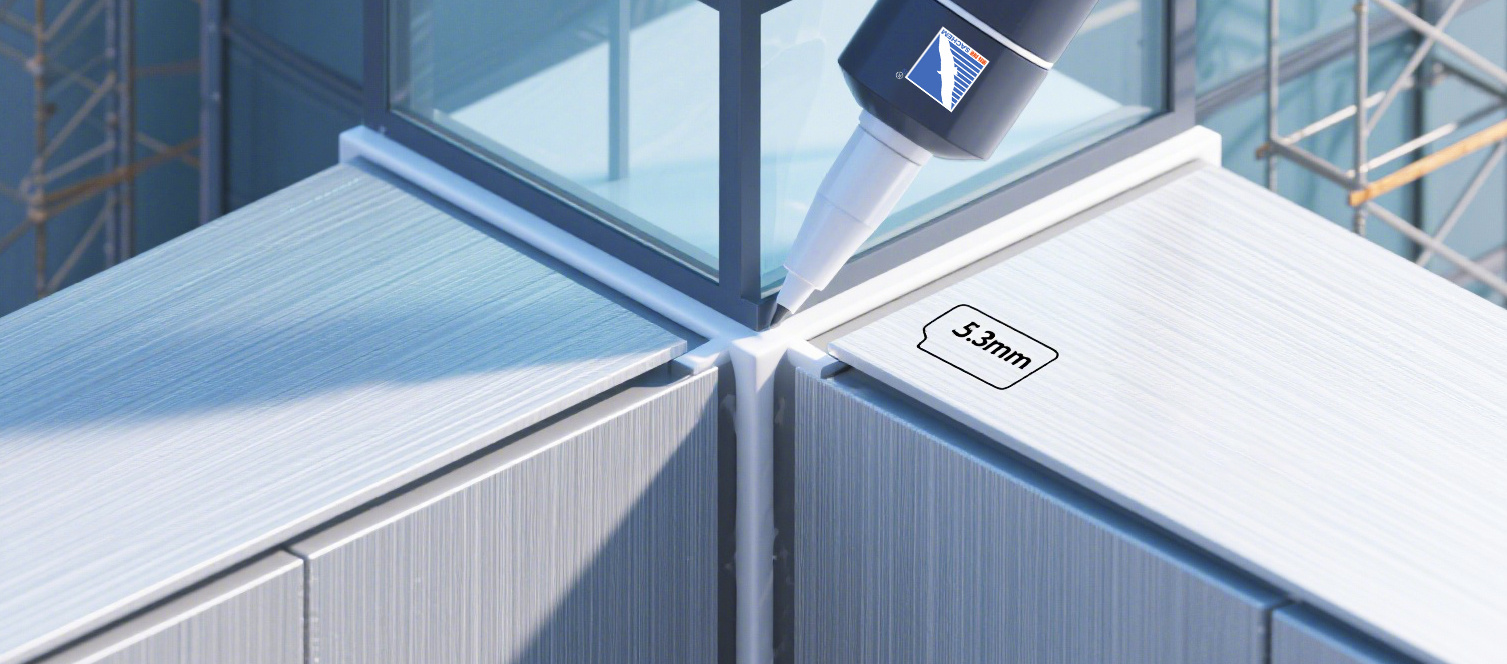Sheet metal
Sheet metal
Silicone adhesive is a commonly used and high-performance sealing material in metal sheet sealing. Its unique chemical and physical properties enable it to adapt well to the sealing needs of metal sheets. The following provides a detailed introduction from the aspects of applicable scenarios, advantages, selection points, and construction precautions:

1、 Application scenarios of silicone adhesive in metal sheet sealing
Sealing of metal sheets for building exterior walls: The joints of decorative or enclosure panels such as aluminum veneers and color steel plates can prevent rainwater and moisture from entering the interior, while also resisting the entry of external dust and impurities.
Industrial equipment metal sheet sealing: used for metal sheet connection parts such as mechanical equipment casings and pipelines, playing a role in sealing, shock resistance, and leakage prevention, protecting internal parts of equipment from external environmental influences.
Metal sheet sealing for transportation vehicles: used at the joints of metal body panels in cars, trains, ships, etc., it can reduce the noise generated by vibration and prevent water, gas, etc. from entering the car or cabin.
2、 Advantages of using silicone adhesive for sealing metal sheets
Excellent weather resistance: able to resist the erosion of natural environmental factors such as ultraviolet rays, high and low temperatures (usually maintaining stable performance within the range of -50 ℃ to 200 ℃), wind and rain, ozone, etc., long-term use is not easy to age, crack or lose viscosity, and has a long service life.
Good adhesion: It has strong bonding ability to metal plates (such as aluminum, steel, copper, etc.), can tightly adhere to the metal surface, form a reliable sealing layer, and is not easy to fall off.
Excellent elasticity and stretchability: After curing, it has a certain degree of elasticity. When the metal sheet undergoes expansion or displacement due to temperature changes, vibrations, etc., silicone adhesive can expand and contract accordingly, maintaining sealing performance and avoiding gaps.
Chemical resistance: It has a certain resistance to various chemical substances (such as general acidity, alkalinity, oil stains, etc.) and can maintain a sealing effect in environments with slight chemical pollution.
Convenient construction: It is usually a single component and does not require mixing during use. It can be directly applied with tools such as glue guns. The curing process is less affected by the environment and can be cured at room temperature.
3、 Key points for selecting silicone adhesive for sealing metal sheets
Type selection: Choose the appropriate type of silicone adhesive based on the usage environment. For outdoor scenes, weather resistant silicone adhesive is preferred as it has outstanding UV resistance and high and low temperature resistance; If a certain structural force needs to be borne, structural silicone adhesive can be used, but attention should be paid to its scope of application and load-bearing requirements.
Adhesive performance: Ensure that the selected silicone adhesive has good adhesion with the specific metal sheet material, which can be verified by checking the product instructions or conducting small-scale testing.
Curing speed: Choose a silicone adhesive with an appropriate curing speed according to the construction schedule requirements. Generally, environmental factors such as temperature and humidity can affect the curing speed, and it needs to be comprehensively considered in conjunction with the construction environment.
Environmental friendliness: If used indoors or in environments with environmental requirements, silicone adhesive that meets environmental standards should be selected to avoid releasing harmful gases.
4、 Construction precautions
Surface treatment: Before construction, the surface of the sealed part of the metal sheet needs to be cleaned to remove impurities such as oil, dust, rust, etc. If necessary, polishing treatment can be carried out to enhance the adhesion between the silicone adhesive and the metal surface.
Apply evenly: Use a glue gun to evenly apply silicone glue to the sealing area, ensuring that the glue layer is continuous, full, and free of bubbles, gaps, and other conditions. The width and thickness of the coating should be determined according to the size of the joint and the sealing requirements.
Curing environment: After construction, it is necessary to ensure good ventilation at the construction site and avoid curing in environments with extreme temperatures (such as below 0 ℃ or above 40 ℃), high humidity, strong winds, and dust to avoid affecting the curing effect.
Avoid pollution: Before curing the silicone adhesive, avoid contact with water, dust, oil stains, and other substances to prevent affecting the sealing performance and appearance.
Tool cleaning: After the construction is completed, clean the used tools in a timely manner to avoid the silicone adhesive solidifying on the tools and making it difficult to remove.
In short, in the sealing of metal sheets, the reasonable selection and correct application of silicone adhesive can effectively ensure the sealing effect, extend the service life of metal sheets, and be suitable for various scenarios and environments.
相关产品
undefined





